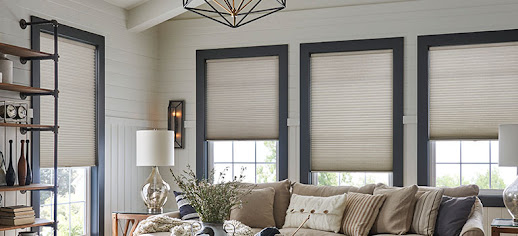Honeycomb Shades are the MVPs of window treatments in New Jersey homes. A popular choice among homeowners with large windows that get ample sunlight during the day, these shades offer a plethora of benefits. However, chances of them being suitable for every house are substantial. With other options such as pleated shades, the competition gets tough. So, let's take a look at the difference between Honeycomb Shades and Pleated Shades to better determine the right pick for your window treatment needs.
Honeycomb Shades.
Honeycomb Shades are made from foldable fabric. Due to their versatility in designing, these shades offer a much higher ratio of insulation and privacy to a room. This type of Cellular Shades are termed honeycomb because of their folding design pattern that adds dimension when drawn.
Pros and cons of honeycomb shades:
- Due to the fabric composition, these shades have smaller stack height. They compress easily when raised providing an unobstructed window view.
- There are numerous shade options to choose from according to your preference for example cordless, printed, double-layered, etc.
- On the other hand, Cellular Shades are very hard to clean because of their intricate pattern.
- These are comparatively more expensive than pleated shades.
Pleated Shades.
Pleated Shades are simple fold fabric window coverings, adding a classic tone to the design of the room. Essentially, Pleated Shades look identical to the Honeycomb Cellular Shades from the front. However, these usually come in a single-layered fabric pattern, hence, allowing a translucent light to pass through at all times.
Pros and cons of pleated shades:
- Although available in similar fabric design choices, patterns, and colors as Cellular Shades, Pleated Shades are less expensive.
- These also maintain a small folding stack.
- Pleated shades are often installed with cordless or motorized upgrades for optimum child safety and ease of use.
- However, since these are sheer fabrics, they do not provide much light control, and provide limited privacy.
- Moreover, owing to their thin pattern and fabric, they are not as energy efficient when compared with honeycomb shades.
Essentially, there are some resemblances in the fabric and pattern between the two, which makes them quite similar in function and aesthetic. So, if you’re looking for a classic, easy-to-design element to add to your room, consider getting swatches of each with free home consultation to know which shades are the right call for your home. Call our team to book a visit soon.

Comments
Post a Comment